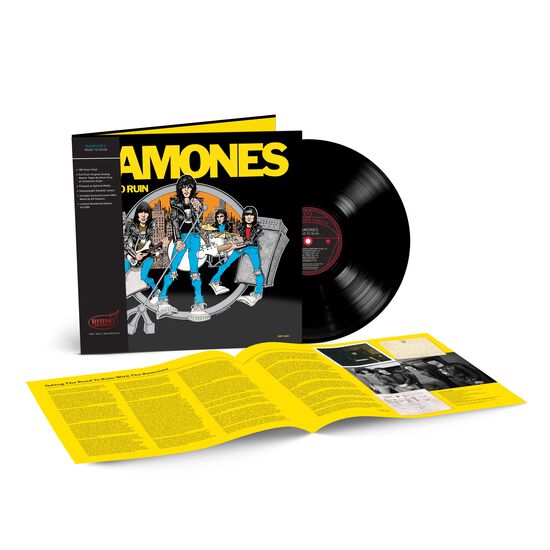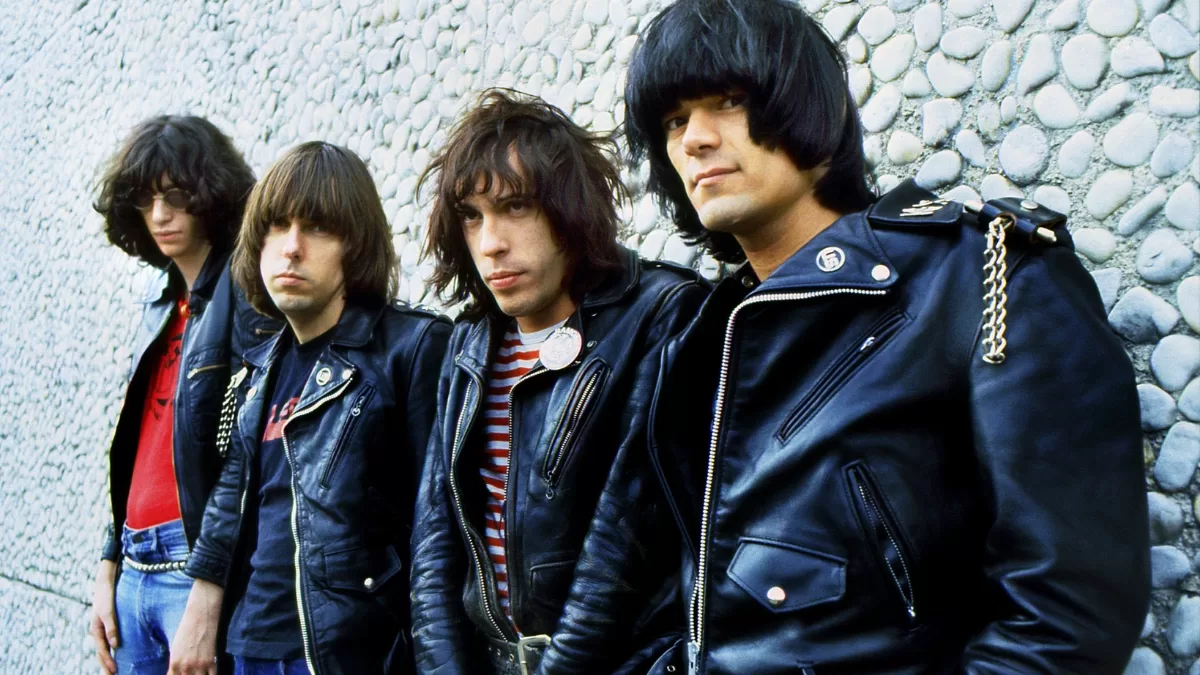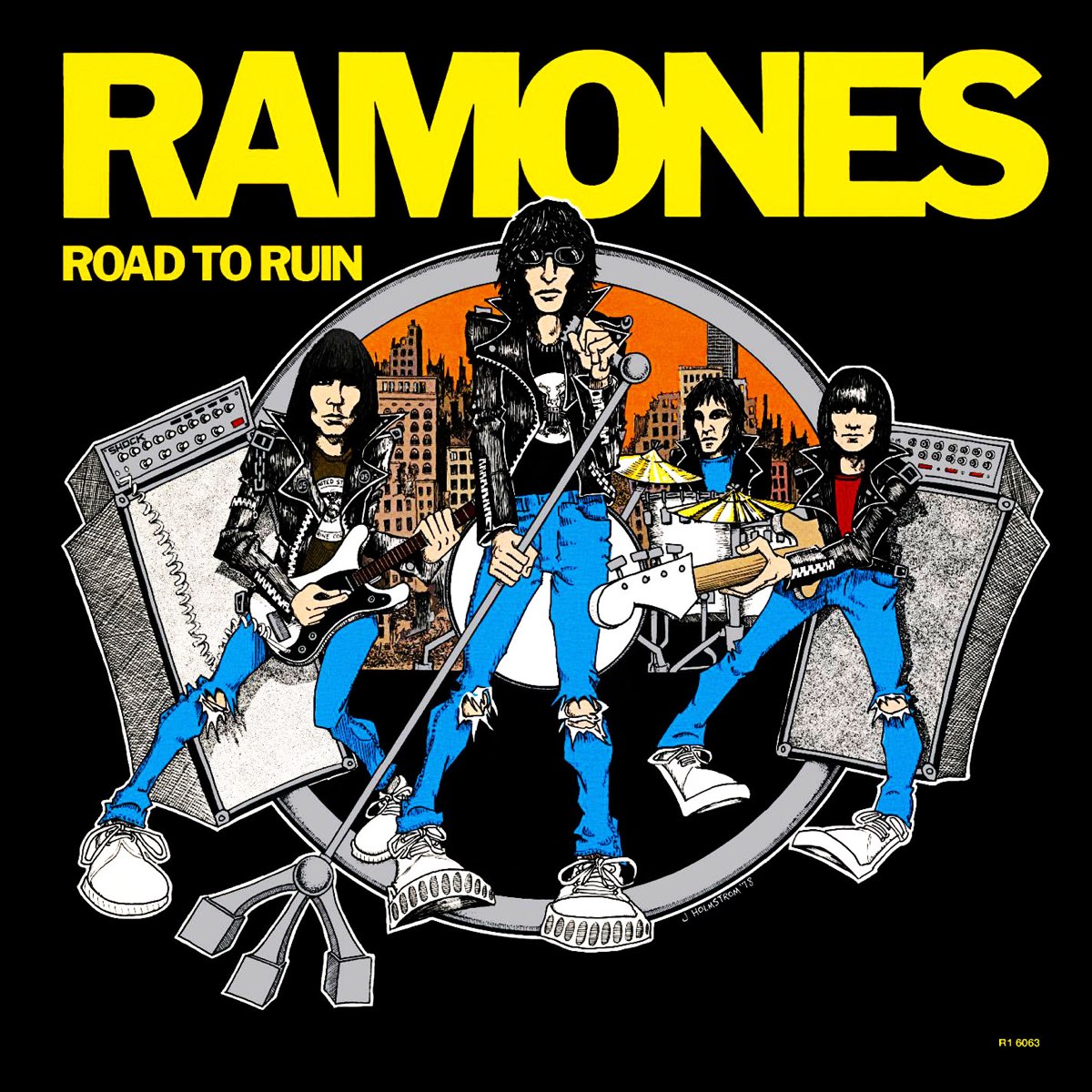The Ramones Paved a “Road to Ruin”
A sonically rich pressing from punk’s godfathers
Thumbing through my parents’ record collection as a kid was the equivalent of an archaeologic excursion. Records were an object of wonder long before I became a bonafide collector, down to how the grooves came across the speakers and the mythology behind the album artwork. When I was five years old, my eyes became fixated on a cartoonish-looking album featuring four men donning a uniform of leather jackets and ripped jeans. My ears were eager to hear what it entailed, to which my father placed the needle on the track he thought I’d like: “I Wanna Be Sedated.” From that moment on, I became a Ramones devotee.
By 1978, the Ramones were the pied pipers of the punk movement. Their first three albums up at this point (Ramones, Leave Home, and Rocket to Russia) solidified the foundation of the genre with three chords, songs clocking at two minutes, volume, and speed, a formula that contemporaries of punk would follow. Just as their career was slowly picking up, the Ramones would face their first personnel change. Tired of the rigors of touring and performing, drummer Tommy Ramone retreated to his preferred role as the band’s producer. Marc Bell, who had cut his teeth with Dust and Richard Hell & The Voidoids, took over the drum throne and was rechristened Marky Ramone.
The release of Road to Ruin marked a sign of maturity in the evolution of the Ramones’ sound. Some of the biggest differentiators were the twangy country tinge of “Don’t Come Close,” the balladry of “Questioningly,” and their acoustic-driven cover of “Needles and Pins.” The band took liberties with their classic sound by including guitar solos and pushing the breaks on their speed, as exemplified on the mid-tempo album opener “I Just Want to Have Something To Do.” However, the Ramones weren’t quick to entirely shed their punk rock credentials. Tracks like “I Wanted Everything,” “I’m Against It,” and “Bad Brain” give the listener what they’d come to expect from the band. The album’s defining cut is “I Wanna Be Sedated,” a track that rivals “Blitzkrieg Bop” as the band’s signature song.
Upon Road to Ruin’s release, fans and critics didn’t know what to make of it. They questioned the validity of the Ramones’ musical shift, whether it was down to pure artistic intent or an attempt to gain airplay. Like the previous albums, it failed to give the band the commercial break they sought to achieve. Before they sought to rectify this in the future by working with a-list producers and veering into pop territory, Road to Ruin stands as the last classic Ramones album.

For the first time, Road to Ruin comes in a glossy Stoughton gatefold jacket, the inner spread consisting of the original printed sleeve of lyrics and band photos; John Holstrom’s cover illustration never looked so luxurious! The four-panel insert features an essay by co-producer Ed Stasium, who describes the album's making in exquisite detail, down to each member’s gear, microphones, and recording techniques. Scans of the master tape boxes and tracking sheets are also featured. Instead of the classic Sire label, Rhino’s custom center label for the High Fidelity series adorns the 180-gram pressing.
Generally speaking, the Ramones are deemed musically simplistic. It doesn’t deter from the fact that their precision and tightness as players allowed them to record without the aid of click tracks or edits done in post-production. The liner notes in the four-panel insert detail the intricacies of capturing the Ramones on tape: multi-layered guitars from two different amps, three different bass inputs, and extra room mics for drums. Producers T. Erdelyi (Tommy Ramone) and Ed Stasium went to great extremes to make the band sound anything but simplistic on Road to Ruin.
Johnny Ramone’s technique of playing down-stroked barre chords gave his style an aggressive edge, and it comes across as a raucous wall of sound on tracks like “I Wanted Everything,” “I Don’t Want You” and “Go Mental.” There is a silk-like transparency on the acoustically-driven tracks “Don’t Come Close” and “Questioningly,” the former having rich production value with 14 overdubbed guitars! Dee Dee Ramone’s bass is warmer in the more subtle tracks, but he unleashes a percussive tone on the amped-up “I’m Against It.” Marky Ramone’s drumming blends in for most of the album, but the moments where he sounds the most boisterous are with the opening fill on “Needles and Pins” and the instrumental break on “Bad Brain.” Joey Ramone’s double-tracked vocals come across with textured definition. His gang vocals on “I Just Want to Have Something To Do” sound three-dimensional as they creep in and out of the speakers.
This pressing of Road to Ruin provides the listener with what they come to expect from the Ramones, along with some lighter surprises. Its richness in sonic variety is undeniable and makes for a stunning inclusion in Rhino’s High Fidelity series.












































.png)








